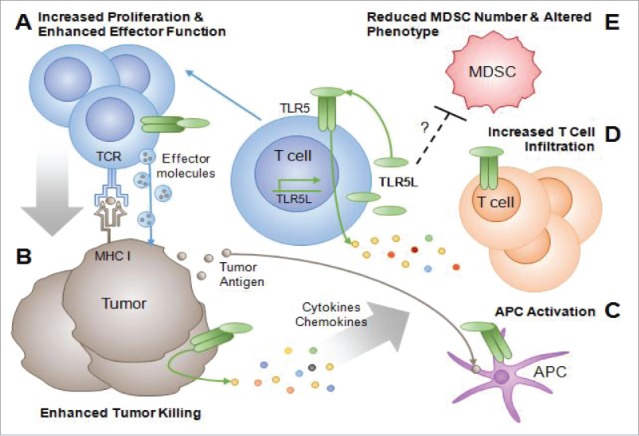Figure 1.

TLR5L–secreting T cells costimulate T cell responses and alter the tumor microenvironment. (A) Tumor reactive T cells migrate to the tumor where they secrete TLR5L, leading to increased T cell proliferation and survival. (B) TLR5-stimulated T cells exhibit increased tumor cell lysis. This process releases tumor antigens, making them available for uptake and presentation by APC. TLR5 engagement on APCs further potentiates their ability to cross-present antigen (C). Tumor cells themselves also respond to TLR5 engagement, releasing various cytokines and chemokines. The production of cytokines and chemokines by TLR-stimulated T cells and tumor cells results in the recruitment and activation of (C) APC and endogenous T cells to the tumor, which propagate antitumor immune responses (D). (E) TLR5L–secreting T cells reduce the number of CD11b+Gr1high MDSCs in tumor-bearing mice. Furthermore, intratumoral delivery of TLR5L by T cells results in the induction of MHC I, MHC II, and CD86 on CD11b+Gr1high cells, a phenotype associated with a more mature and less T cell suppressive cell types. Whether the changes in MDSC numbers or phenotype occur via TLR5 engagement or occur as a result of other factors induced by TLR5L are unknown.
